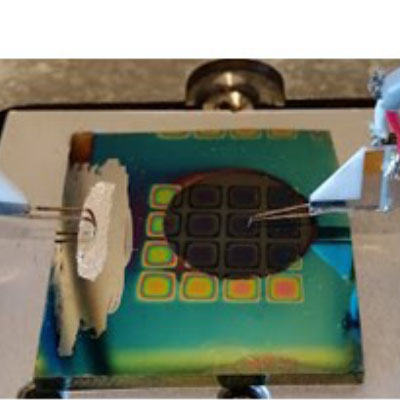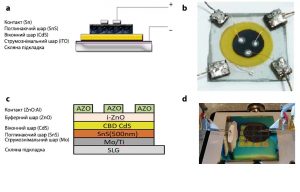
Purpose and Scope
The CdS/SnS heterojunction-based solar cells are functional devices for converting solar energy into electricity. The main sphere of application is using them as generators of electrical energy.
Main Characteristics and Essence
The devices are the 3rd generation of thin-film solar cells created based on traditional and new semiconductor functional materials. The main functional layers were synthesized using techniques of evaporation in a quasi-closed spaces (QCS), immersion in solution (chemical bath deposition (CBD)) and atomic two-layer deposition. Solar cells operate using superstrate-type
(ITO/n-CdS/p-SnS/Sn) and substrate-type (Mo/p-SnS/n-CdS/ZnO/ZnO:Al) heterostructures.
Comparison with the World-Known Analogues. Advantages
The main advantage of the device is minimal content of heavy metal (cadmium) due to the use of tin sulfide as an absorbent material. SnS is a cheap non-toxic material, which reduces the cost of the device and simplifies the disposal after the expiration date.
Market Demand
Based on film solar cells with n-CdS/p-SNS, cheap and ecological systems for generating electricity can be developed in an area with a large number of sunny days.
Readiness for Operation
Ready-made prototypes of devices are created.

